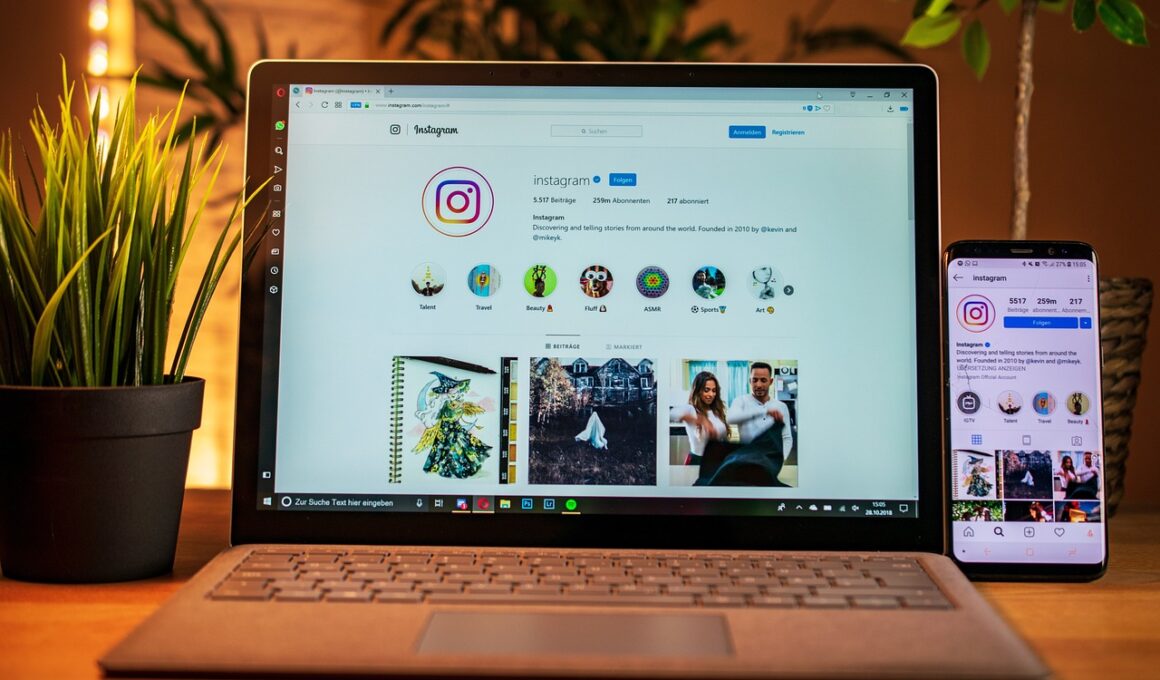Using Instagram Images Legally: What You Need to Know
Instagram has become an essential platform for sharing images, yet not all images found on the site are free to use. Understanding copyright laws is crucial. Copyright protects the creator’s rights, and this means most photos on Instagram are copyrighted. It’s important for users to respect these rights when considering using these images. Many assume that if an image is publicly available, it is free to use, but this is a misconception. Always assume that unless stated otherwise, an image has copyright protections. This article will delve into the legal considerations surrounding the use of Instagram images and what users need to know to avoid legal issues. Knowing about rights also encourages respect for creators within the Instagram community. A lack of understanding on this topic can lead to unintentional infringements. Many creators become frustrated when their work is used without permission. Therefore, learning how to properly source images on Instagram is essential. In this regard, consent is always needed when using another person’s image. Ultimately, protecting the rights of creators ensures a healthy, respectful online environment for everyone.
When navigating Instagram’s visual landscape, users must be aware of how copyright laws apply to the images they encounter. To use any image legally, there are two primary aspects to consider: copyright ownership and permissions. First, it helps to determine who owns the photograph, which is typically the person who took it. Many Instagram users actively seek exposure, and they might allow their images to be shared under certain conditions. This leads to the need to obtain permission before reposting or using an image outside Instagram’s platform. Often, creators will provide a way to connect with them through direct messaging or tagging, creating a direct communication line for permission requests. Some images may also be located under licenses that permit use, such as Creative Commons. However, it is imperative to read the specific terms attached to any such license. All in all, conducting this due diligence can save users from potential legal consequences down the line, which could result from unpermitted usages of images. Understanding these principles is vital for both casual users and companies looking to utilize Instagram images effectively.
Understanding Image Creative Commons Licensing
Creative Commons licenses grant users flexible options for sharing and utilizing images. Some content on Instagram may be available under these licenses, but it is essential to recognize the differences between them. Various categories exist, each with its rules governing permissions. For example, some licenses allow adaptations and commercial use, while others restrict those activities. Before utilizing any such images, you should familiarize yourself with the specific license type to understand the allowable usage, including whether proper attribution is required. Attribution is an essential aspect of using Creative Commons content; failing to credit the creator correctly can lead to copyright violations. Always ensure you provide credits as stipulated by the particular license. Additionally, it is advisable to keep records of where the image was sourced and the license information. By adhering to these guidelines, users can incorporate Creative Commons images into their content safely without infringing on the original creator’s rights. This knowledge not only promotes ethical social media habits but also supports creators who share their work under these flexible licenses.
Regardless of copyright considerations, it is vital to understand fair use, which offers some leeway for using copyrighted images. Fair use commonly applies in educational, commentary, or transformative scenarios. However, the fair use doctrine is complex and varies depending on jurisdiction. In many instances, merely sharing an image on Instagram does not fall under fair use, particularly if used for commercial purposes. To avoid misinterpretation, always seek permission from the image owner when possible. Fair use does not guarantee legal cover, especially when commercial gain is involved. Therefore, viewers should proceed cautiously and ideally seek legal advice when contemplating fair use arguments. It is also crucial to consider the impact of an image’s use. If your intent is to make a profit or gain exposure while using someone’s work, err on the side of caution. The balance between respecting the original creator’s work and expressing individuality through reposts is delicate. Ultimately, striving for ethical practices in image usage means respecting creators and honoring their right to control their work, which embodies the spirit of sharing culture on platforms like Instagram.
Attribution Guidelines for Instagram Images
Attributing images correctly is not only a legal obligation but also an ethical one. When reposting, it is essential to mention the original creator’s username and link to their profile. This practice serves to acknowledge the effort and artistry behind the work, creating a culture of respect on the platform. When sharing an image, consider adding the phrase ‘Photo by @username’ in your caption or overlaying it directly on the image. This attribution demonstrates that while you may be sharing their work, you recognize and respect their rights. Many creators appreciate this acknowledgment; it encourages them to share more content and engage with their audience positively. Likewise, consider reaching out and asking for explicit permission before sharing. Doing so can strengthen community ties and foster trust. Respecting creators contributes to a healthier Instagram ecosystem, where all users feel valued and recognized. Moreover, being diligent with attributions can significantly reduce the chances of potential disputes. Since creators often rely on honesty and integrity from their peers, professionals must emphasize importance in maintaining this respectful conduct on Instagram, ensuring everyone benefits.
Image theft is a growing concern in today’s digital environment. Unattributed reposts may result in creators losing potential income and exposure opportunities, leading to frustration. Even unintentionally violating copyright laws can result in legal actions. Consequently, users must remain vigilant while navigating the complex landscape of social media images. Another aspect to consider is the potential backlash from the creator community. When creators witness their work misused, they may share their experiences publicly, potentially damaging a user’s reputation. To create a beneficial relationship online, being transparent and respectful in image usage is crucial. Always ask questions and seek guidance when unsure about copyright issues regarding an image. Social media thrives on creativity, and preserving that creativity means protecting creators. Establishing mutually respectful communication allows all parties to thrive within the evolving media space. Emphasizing clear boundaries and agreements around image usage is as important as the creative process itself. Ultimately, creating a supportive environment fosters collaboration and innovation in the digital realm, benefiting both content creators and consumers alike.
Conclusion: Respecting Copyright Law on Instagram
In conclusion, respecting copyright laws and engaging ethically with images on Instagram is essential for everyone. Today’s social media landscape thrives on shared content, but adherence to rights attributed to creators is paramount. By understanding necessary permissions and practicing due diligence, users can effectively navigate the intricacies of copyright. Always seek consent before using another’s work and provide proper attributions as required. By doing so, you encourage an atmosphere of mutual respect that benefits everyone involved. Embrace a responsible approach that values existing copyright laws and recognizes the importance of giving credit where credit is due. That practice not only shows appreciation for the hard work of creators but also promotes a healthier digital community overall. As Instagram continues to evolve, awareness of these considerations will help preserve artistic integrity on the platform. Ultimately, following these guidelines will lead to a more vibrant, engaging, and ethical Instagram experience for all parties involved. By prioritizing legal considerations, we can honor the creative spirit while still sharing and enjoying the wealth of imagery that Instagram has to offer.
Respecting copyright laws not only protects creators but also ensures a vibrant and sustainable Instagram ecosystem. Engaging with the platform responsibly fosters a creative community where imagery can thrive. It’s the shared responsibility of users to enhance this environment, making it an enjoyable space for all.


